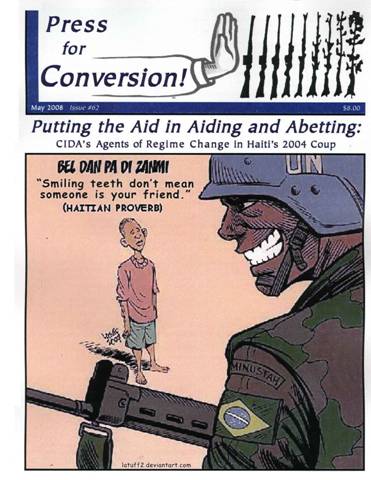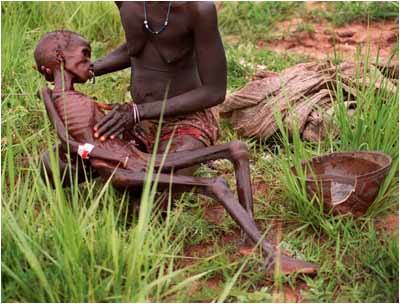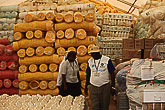Jan 04
20120
Humanitarian Agencies, Imperialist Wars/Occupations, The International Campaign to Destabilize Syria
Hall of Fame & Hall of Shame on Syria Reporting
MSM Propaganda on Syria: Now Comes the Silent Treatment
Wednesday, 4. January 2012
Have you noticed how it’s been all quiet on the Western MSM War Propaganda front? As more and more alternative news outlets are increasing their reporting on the real situation in Syria, as even the puppet Arab League is issuing observations contradicting previously reported ‘un-sourced and undocumented’ atrocities and a made-up huge death-toll caused by Assad’s regime, the mainstream media and corporate-funded NGO news fronts have been decreasing their Syria coverage. It is almost as if they’ve gotten ‘a black-eye’ and gone in hiding. Rest assured, there won’t be any retraction on previously publicized, that is, intensely, un-sourced, un-confirmed, un-documented, fictional death toll numbers and imaginary scenarios.
Let’s take a look at a few recent reports starting with an excellent piece at Asia Times today [All Emphasis Mine]:
Mistaken Case for Syrian Regime Change
What we are seeing in Syria is a deliberate and calculated campaign to bring down the Assad government so as to replace it with a regime “more compatible” with US interests in the region. The blueprint for this project is essentially a report produced by the neo-conservative Brookings Institute for regime change in Iran in 2009. The report – “Which Path to Persia?” [3] – continues to be the generic strategic approach for US-led regime change in the region.
A rereading of it, together with the more recent “Towards a Post-Assad Syria” [4] (which adopts the same language and perspective, but focuses on Syria, and was recently produced by two US neo-conservative think-tanks) illustrates how developments in Syria have been shaped according to the step-by-step approach detailed in the “Paths to Persia” report with the same key objective: regime change.
…
Arguably, the most important component in this struggle for the “strategic prize” has been the deliberate construction of a largely false narrative that pits unarmed democracy demonstrators being killed in their hundreds and thousands as they protest peacefully against an oppressive, violent regime, a “killing machine” [7] led by the “monster” [8] Assad.
Whereas in Libya, the North Atlantic Treaty Organization (NATO) claimed it had “no confirmed reports of civilian casualties” because, as the New York Times wrote recently, “the alliance had created its own definition for ‘confirmed’: only a death that NATO itself investigated and corroborated could be called confirmed”. “But because the alliance declined to investigate allegations,” the Times wrote, “its casualty tally by definition could not budge – from zero”. [9]
In Syria, we see the exact opposite: the majority of Western mainstream media outlets, along with the media of the US’s allies in the region, particularly al-Jazeera and the Saudi-owned al-Arabiya TV channels, are effectively collaborating with the “regime change” narrative and agenda with a near-complete lack of questioning or investigation of statistics and information put out by organizations and media outlets that are either funded or owned by the US/European/Gulf alliance – the very same countries instigating the regime change project in the first place.
Then, the article sets about analyzing and exposing dubious MSM and Western-Funded dirty NGOs (You may want to see my previous report on how for months ‘AntiWar.Com,’ despite all appeals, disseminated and marketed the misinformation and propaganda by these exact same dirty sources here):
Claims of “massacres”, “campaigns of rape targeting women and girls in predominantly Sunni towns” [10] “torture” and even “child-rape” [11] are reported by the international press based largely on two sources – the British-based Syrian Observatory of Human Rights and the Local Co-ordination Committees (LCCs) – with minimal additional checking or verification.
Hiding behind the rubric – “we are not able to verify these statistics” – the lack of integrity in reporting by the Western mainstream media has been starkly apparent since the onset of events in Syria. A decade after the Iraq war, it would seem that no lessons from 2003 – from the demonization of Saddam Hussein and his purported weapons of mass destruction – have been learnt.
Of the three main sources for all data on numbers of protesters killed and numbers of people attending demonstrations – the pillars of the narrative – all are part of the “regime change” alliance. The Syrian Observatory of Human Rights, in particular, is reportedly funded through a Dubai-based fund with pooled (and therefore deniable) Western-Gulf money (Saudi Arabia alone has, according to Elliot Abrams [12] allocated US$130 billion to “palliate the masses” of the Arab Spring).
…
Please go read this stellar analysis by Aisling Byrne here at Asia Times. Bravo.
Russia Today has been reporting both sides and doing so with a fair balance. Here is the latest from RT:
Syrians Being Killed by Gangs & defectors
As Syrian forces reportedly continue to kill civilian protesters, armed rebels have threatened to step up their own attacks. Middle East expert Dr. Jeremy Salt says there is tunnel vision when it comes to deciding just who is doing the killing.
“In its report, the Human Rights Council said 4,000 [people have been killed in Syria to date]…but there was no information about where they got that figure from,” he said. “A few days later, Navi Pillay, who is the UN Human Rights Commissioner, stood up in the Security Council and said 5,000 – and the figure echoes around the world,” he told RT.
“I think it lodges in the popular imagination as 5,000 people being killed by the Syrian government – by the security forces, by the military – whatever. Whereas in fact, I don’t think there’s any doubt at all that a large number of military, of civilians have been killed by armed gangs and by defectors,” Salt explained.
…
Look, even the filthy-owned, puppet in disguise, Al Jazeera, who has been beating the War on Syria drums loudly for months, has begun backpedaling:
The case against military intervention in Syria
In this, the SNC repeated earlier appeals by the Free Syrian Army for a no-fly zone, as well as a few scattered calls in the street. The plight suffered by civilian protesters has indeed reached an unbearable level. This raises questions about how to achieve lasting change in Syria.
Foreign intervention paves the way for a dangerous strategic choice that opposition movements within and outside Syria should carefully weigh. It will be argued here that the struggle for change needs to be fought from within and transition to democracy peacefully implemented. This implies that foreign military intervention should, under all circumstances, be ruled out; domestically, resistance to the regime should also remain unarmed.
…
Ordinarily I wouldn’t ask our readers to waste their time and read this Arab branch of our MSM propaganda machine, but I am going to invite you to go and read the above piece and compare it to all their previous reporting on Syria in the last few months; including ‘filming a border city at 5:00 a.m. in order to claim town desertion by protesters!.’
I mean, come on people, even our puppets couldn’t find atrocity and genocidal acts to report back and appease their Western masters! And yet, the black-eyed MSM and corporate-funded and government-backed quasi alternatives are shameless enough to not retract their months-long BS reporting, statistics, and all that heavily promoted fiction.
Now, there are way too many solid and reliable real alternative news outlets to credit with excellent and critical reporting. I won’t be able to list them all, and I am sure many of you already know who they are. So I am going to list less than a handful and congratulate them on their relentless and vigilant reporting and editorials:
Asia Times (Especially Pepe Escobar)
Center for Research on Globalization
Tony Cartalucci’s Land Destroyer
Again, there are many others and they all deserve credit for fair and balanced, and most importantly, independent reporting on Syria. Thank you all!
Hmmmm. For the hall of shame, if I were to list all, I’d take several long web pages. I don’t believe you need that long list of reminders. Think NY Times, Washington Post, Fox News, MSNBC, NBC, CBS, Al Jazeera, News Week, Times …and keep going, and going, and going …
On the other hand, I am going to list one major hall of shame member, my one major disappointment:
With the exception of Raimondo, Giraldi and a couple of other stellar writers there, their new additions, Ditz & Keaton, have been filling up their front page with all the culprit MSM headlines beating the war drums on Syria, and have been doing so for months. As I’ve said before, a few independent journalists and authors will be writing a series and providing astonishing statistics on AntiWar.Com’s recent troubling changes. Meanwhile I want to go on record and reveal that the new management has been refusing to publish any articles submitted to them on all documented contradictory, factual, reports on Syria. In fact, I have been banned and censored from even posting comments on their site (several respectful but critical comments were taken out, deleted and censored by their new managers).
You see, what really gets my blood boiling on AntiWar.Com is their name, title: Anti War, for Pete’s sake! And what these dubious new additions have been doing lately is the exact opposite. So I hope the good guys there would either kick out these infiltrators, or, just change their name to ProWar.Com. They made it to the top of our list of hall of shame contenders on Syria, Libya and beyond.
http://www.boilingfrogspost.com/2012/01/04/msm-propaganda-on-syria-now-comes-the-silent-treatment/







